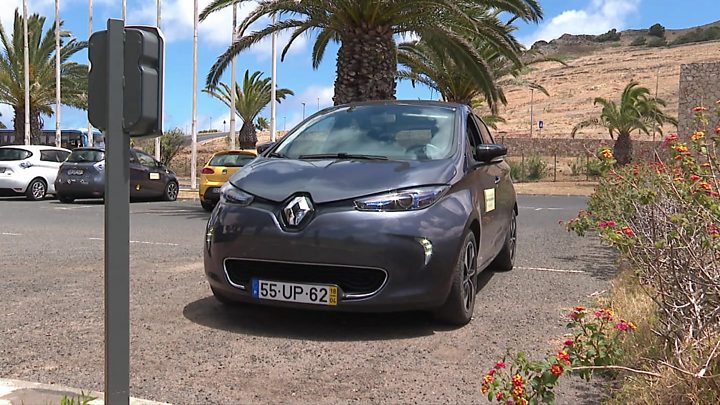Home » Australasia »
Why Australia is debating a vast underground ‘battery’
Far beneath a national park in one of the coldest parts of Australia is where the government wants to build a hugely ambitious project: a power station capable of generating 10% of the nation’s energy.
It is part of a bold – and expensive – hydro electricity scheme in the Kosciuszko National Park in south-east New South Wales.
The Snowy 2.0 project has ambitions to carve tunnels through 27km (17 miles) of rock to make a huge pipeline linking two reservoirs. The difference in elevation of 700m (2296ft) is what gives the plan its extraordinary might.
It is simple enough in concept, but elaborate in design, and challenging in practice.
Scheme ‘in league of its own’
When there is cheap, excess electricity in the grid and demand is low, usually at night, water from the lower reservoir, Talbingo, is pumped up to its lofty cousin Tantangara that sits on a high, open plateau.
When demand for energy rises, the water is released, and is sent tumbling down the main waterway tunnel.
Electricity is generated in a powerhouse buried 800m below the surface by turbines, which are also used as pumps to heave water back up from the lower reservoir to Tantangara.
Conventional hydro plants are pictures of spray and mist when captured water is set free. The Kosciuszko plan, however, would see energy generated underwater and the water reused, while the entire operation would be almost completely hidden beneath the national park.
“What Snowy 2.0 is proposing is in a league of its own,” Prof Michael Braer, director of the Melbourne Energy Institute at the University of Melbourne, tells the BBC.
“It is essentially an extremely large and extremely powerful battery. At full power output it would be roughly 10% of Australia’s electricity production.”
Exploratory work has started on a venture that has echoes of the original Snowy Mountains hydro and irrigation scheme in Australia’s Great Dividing Range mountains, which was the largest engineering project ever seen in Australia.
The reservoirs that will power Snowy 2.0 were constructed as part of that fabled nation-building enterprise which began in October 1949 and took more than 25 years to complete. The technological wonder included seven power stations, 16 major dams, 145km of inter-connected tunnels and 80km of aqueducts.
The first Snowy scheme was as much about people as it was power. Over 100,000 men and women from more than 30 countries laboured for years. A third of the workforce was Australian, and they, along with migrant muscle, built a symbol of national ingenuity and diversity.
“The spirit of the original Snowy is absolutely flowing and you get it as soon as you turn up to the town of Cooma because the heritage is everywhere,” says Dave Evans, director of engineering at Snowy 2.0.
Australia’s unique green energy mix
This time around Australia has again sought help from overseas, consulting experts from Iceland, Switzerland, Italy and beyond.
“Usually you have to go around Asia or Africa to work on anything like this, and they are usually a bit smaller. So to have one in your backyard is exciting,” Mr Evans says.
Initial works will determine if Snowy 2.0 is both feasible and financially viable. The government hopes it will drive down power prices and give the electricity sector greater reliability.
“There is no question this is a big engineering challenge. Ultimately, you don’t know exactly what the rocks look like between the two reservoirs,” says Dr Matthew Stocks, a research fellow at the Australian National University.
Australia is one of the sunniest continents, and wind energy is currently the cheapest source of large-scale renewables. Add to the mix hydro technology and Australia has the potential to become a clean energy superpower as more of its coal-fired stations shut down.
“Australia is on an amazing trajectory in terms of installations of wind and PV (photovoltaic solar cells used in rooftop panels). We are currently installing on a per capita basis wind and solar faster than anywhere else in the world,” says Dr Stocks.
“In the mid-2020s we are going to have to start significantly changing how our electricity system operates to cope with the variability of wind and PV. You need to spread the resources widely, so you are sampling different weather at different times. You need a certain amount of storage, and pumped hydro is by far the cheapest way to store energy.”
For the exploratory excavations alone, 600,000 cubic metres of rock will be gouged from the land.
Snowy Hydro has disputed assertions from environmentalists that up to 100 sq km of national park, including native alpine bushland and streams, would be damaged by the dumping of excavated rock.
A very risky project?
Yet not everyone is convinced that such a monumental project is worth the effort.
“It is probably around a A$6-7bn ($4.2-4.9bn; £3.3-3.9bn) project, and you can build a lot of other storage and renewables schemes for that kind of money,” says Andrew Stock, an energy expert at Australia’s independent Climate Council.
“By world standards it is a mega project and the track record for mega hydro projects delivering them on schedule and on budget is very poor globally, so it is a very risky project.”
Costs have blown out since former Prime Minister Malcolm Turnbull announced in 2017 that it would be built for an estimated A$2bn. This week, he vigorously defended the project as “the key to making renewables reliable”.
It’s unclear if power bills – a constant irritant for many Australians – will fall when the giant storage unit is working. Others question the political motive: was it a way for a centre-right government that is an enthusiastic supporter of the fossil fuel industry to promote its environmental credentials?
The director of the Victorian Energy Policy Centre, Bruce Mountain, thinks so.
“Snowy Hydro 2.0 was a political get-out-of-jail card, played at the public’s expense,” he told the Australian Broadcasting Corporation. “This is a project that we can confidently forecast will be a drain on the public purse and whose service in the transition to a cleaner energy future can be met far more cheaply from other sources.”
The boss of Snowy Hydro, Paul Broad, is, though, convinced the project is critical as Australia moves away from a reliance on coal, which generates most of its electricity.
“There’s a massive amount of renewals coming into the market – you can’t have it without some kind of storage,” Mr Broad explained to broadcaster’s 7.30 programme.
The engineers working on the project appear unfazed by the controversies and expect that Snowy 2.0 will be pumping out electricity by late 2024, or early the following year.
“It is not far away,” according to Mr Evans, the scheme’s engineering boss. “It is coming quickly.”
Source: Read Full Article




